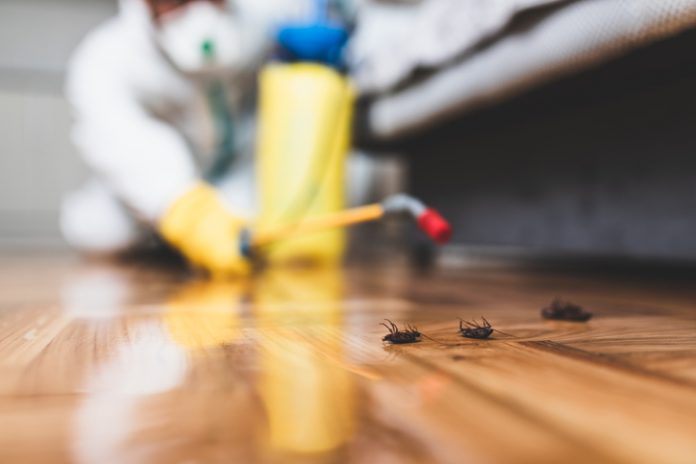
Hotel and lodging operators are entering into what is expected to be a busy travel season amid unprecedented circumstances. Labor shortages, supply chain disruptions, and the lingering impacts of COVID-19 have changed the overall travel experience for both workers and guests. After two years of travel restrictions, many will consider traveling for longer periods of time this summer season.
Like people, pests love to travel. As occupancy rates increase, so do the chances of pest introductions. It can be difficult to prevent pests from checking in with guests, but there are certain proactive measures hotel operators can take to better protect their guests, workers, and brand from the negative impacts of pest infestations. Here are three tips to stay a step ahead of pests this summer travel season:
Get to Know the Common Pests
The constant flow of people, daily and weekly room turnover, and on-site or in-room dining capabilities make hotel and lodging facilities vulnerable to a wide variety of pests. Some species are more susceptible than others and identifying “frequent flyers” is the first step toward creating an effective action plan.
- Bed Bugs: Bed bugs are roughly the size of an apple seed, making them hard to spot. With a flattened oval body and a reddish-brown color, bed bugs are 5 millimeters in length and have no wings.
- Cockroaches: The United States is home to about 70 different species of cockroaches. These winged insects are flat-bodied, made up of a thorax with three segments and an abdomen with 10 segments. Their six legs have tiny claws on each end and they range in size from about an inch long to up to three inches long.
- Flies: There’s a wide variety of large and small fly species. Common fly species found in hotel and lodging facilities include the house fly, blow fly, and fruit fly. These flying insects vary in size from 3 millimeters to up to 25 millimeters and are often attracted to food and waste.
Pay Attention to Warning Signs and High-Risk Areas
Pests can quickly adapt to changing environments and are experts at locating the best hiding spots to avoid being seen. Timing is key when dealing with a potential pest problem. By the time a pest is spotted, it is likely too late, and an infestation has already formed. Hotel and lodging managers can train housekeeping staff about the warning signs to discover potential pest problems sooner.
Warning signs may include small, dark-colored fecal matter as well as shedding from bed bugs. Hotel managers should understand that many pest warning signs are not obvious to the untrained eye; it’s important to properly train hotel staff and document anything out of the ordinary.
Staff should also know where to look for signs of pests, especially in high-risk areas, like always thoroughly inspecting guestrooms and other areas with furniture or food. Bed bugs—and other small pests—can hide in any gap, void, crack, or crevice. Furniture, wall voids, and spaces in decorative items are all potential hiding places. Bedframes, headboards, seat cushions, and baseboards are also common for bed bugs.
Cockroaches are commonly found near or under refrigerators, ovens, and other appliances that generate heat because they are drawn to the warmth of these units. Dining areas, kitchens, and anywhere food is stored are susceptible to flies who are motivated by food. Goods, supplies, and equipment coming into the hotel should also be inspected because pests can latch onto goods and carts.
Protect From the Outside In
An opening as small as a credit card gap is all bed bugs and other small pests need to sneak inside a building. An essential step toward keeping pests from invading interior spaces is through regular and thorough inspections of the exterior property.
Landscaping areas can attract and create harborage for insect and rodent pests that feed on or hide amongst shrubs, flowers, and plants. Mulch and pine straw are two common ground coverings that harbor pests when used excessively or not replaced regularly. A good rule of thumb for hotel property managers is to keep plants, trees, and shrubs constantly trimmed and at least 18 inches from the foundation of the structure. When it touches the building, it provides an access bridge to pests.
Pest issues are costly, a headache, and cause unneeded disruptions in an already stressful environment. As hotel operators learn to navigate labor shortages, high staff turnover, and other industry challenges, it may be easy to lose sight of regular pest control maintenance and training. Taking time to educate hotel operators, housekeeping staff, and even customer-facing colleagues can increase how staff handles pest issues.
Pest control is not a cookie-cutter approach for every property. Hotel operators can also work with a trusted pest control expert to generate a multi-layered strategy based on the brand’s needs. By creating, documenting, and providing access to a proactive plan for pest management, hotel owners and managers can ensure housekeepers and staff have the knowledge and resources needed to prevent pests from taking over the property.
About the Author
Eric Braun is a technical service manager at Rentokil North America.











